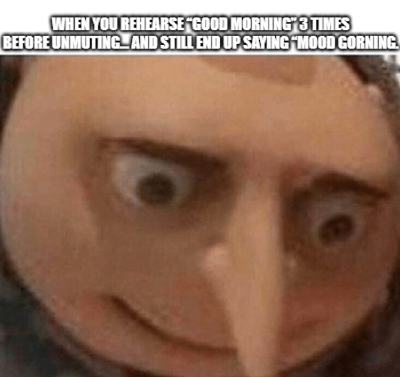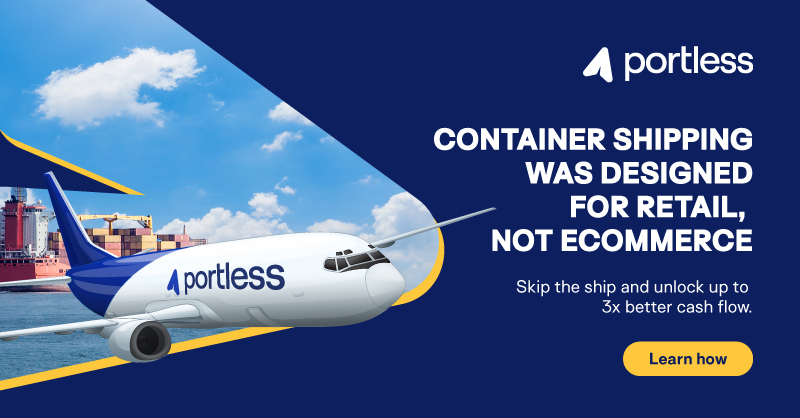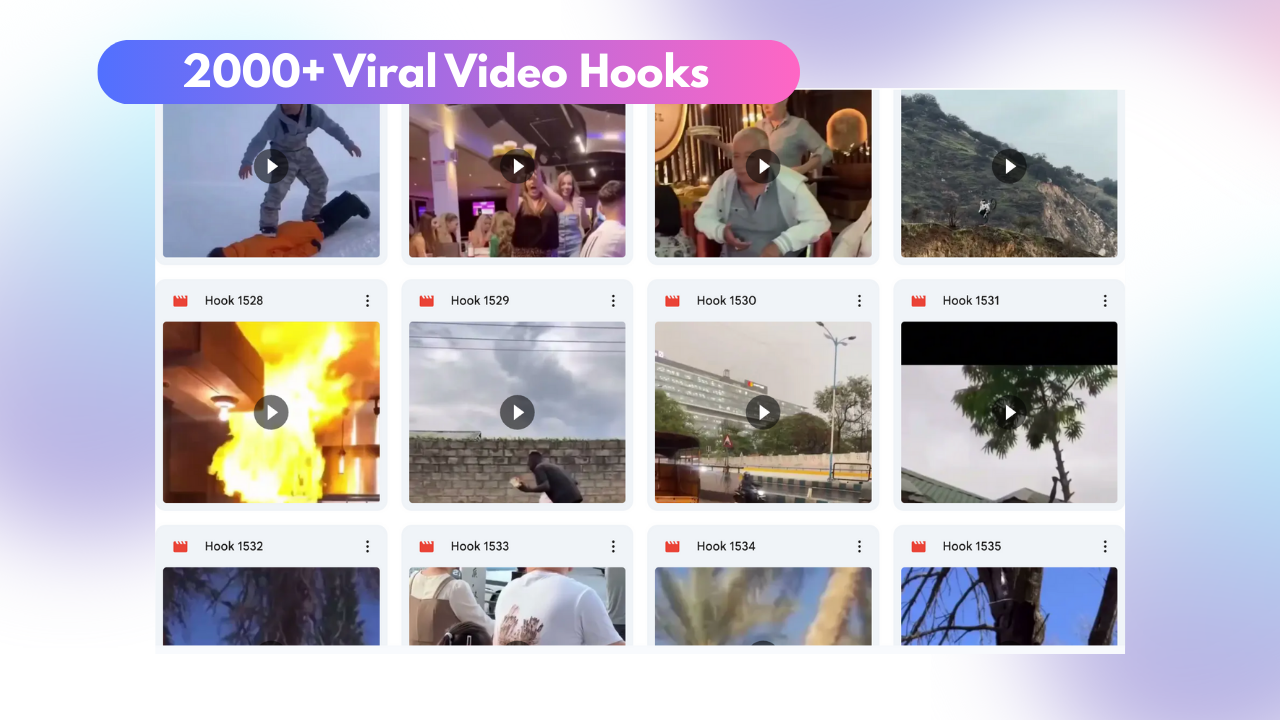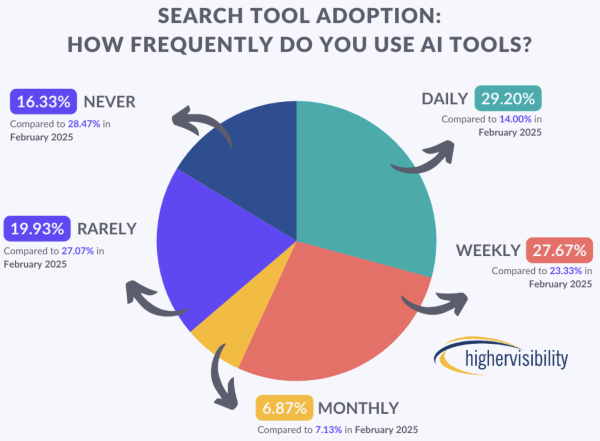Your Hook Data is Lying
🧠 The 3-second hook mistake most brands make, AI search splinters as Google slips, and more!


Howdy readers 🥰

In this newsletter, you’ll find:
🧠 Hook CPR Mapping: The Regression You’re Not Running
🔍 AI Tools Gain Ground as Google Slips, Brand Visibility Splinters
🏆 Ad of the Day
If you’re new to ScaleUP, then a hearty welcome! You and 50k+ CEOs, CMOS, and marketers have reached the right place. Let’s get into it, shall we? Oh! Before you forget, if someone forwarded this newsletter to you, don't forget to subscribe to our newsletter so you never miss out!

Together with Portless
Still Shipping 90 Days Out? That’s a Death Sentence for Growth.

Your inventory is stuck on the water for 60–90 days while customers see “out of stock.” Cash is locked, launches stall, and your ad spend dries up. That’s not just logistics, that’s a compounding growth cap.
Here’s what Portless unlocks:
✈️ Factory-to-customer shipping in just 6 days
📦 Restock SKUs in 3–5 days, not 3 months
🚀 Launch and test products instantly without warehousing risk
💸 Cut lead times by 90% and recover 30–40% more cash monthly
This is the edge Portless brands run on.
Instead of waiting three months to break even, their CAC payback shrinks to 7–14 days. That’s real liquidity recycled into ads, launches, and scale while competitors watch containers drift.
In eCommerce, speed isn’t nice-to-have; it’s the moat that decides who wins.
Get a custom quote for your brand now!

🧠 Hook CPR Mapping: Your Hook Data is Lying
Every creative strategist tracks CTR. But CTR is a mirage.
The real gold lives in, Click-to-Purchase Ratio. Because what stops the scroll isn’t what seals the deal.
The Hidden Breakpoint in Scaling Creative
Great hooks are addictive. They spike Thumb-Stop Rates. But when CPR doesn’t follow, you’ve just paid to entertain, not convert. That’s where most brands burn 6 figures: scaling the wrong variable.
What you need is Hook → CPR Regression:
A data pipeline that links the first 3 seconds of your ad to its final purchase rate, not clicks.
What You Should Be Tracking (But Aren’t)
Here’s the creative regression model we use across $10M+ in spend:
- TSR (Thumb-Stop Ratio) = Attention Quality
- HR (Hold Rate) = Narrative Grip
- CTR (Click Through) = Curiosity Trigger
- CPR (Click-to-Purchase) = Intent Strength
🔍 But only one of these actually predicts profit: CPR.
And it’s disproportionately shaped by hook-message alignment, the psychological setup in those first 3 seconds.
The Hook CPR Ladder (Real Example)

CTR ≠ CPR.
High CTR often signals misaligned curiosity, engaging the wrong audience, primed for dopamine, not dollars.
Deploy This System
- Tag all hooks by narrative type (e.g., Agitation, Social Proof, Fear, Curiosity).
- Build a regression sheet tracking CPR against hook categories weekly.
- Cut the fluff: Anything with CPR below 0.5% at scale gets sunset, no matter how viral.
- Find compounding hooks: Some perform better as you spend more. That’s your creative backbone.
Why It Works
Most brands scale what gets attention. Elite ones scale what drives intent. If you’re not mapping CPR back to the first 3 seconds, you’re not scaling, you’re gambling. Run the regression. Print the profit.

Together with The Operator's Stack
The $9 Vault of Viral Hooks That Never Runs Dry

Content fatigue is real. Ads stall, engagement dips, and audiences swipe past faster than ever. The difference between growth and decline now comes down to your ability to grab attention in the first three seconds.
That’s why we built the Viral Hooks Vault: 2,000+ proven openers updated every single month. These aren’t filler templates; they’re field-tested hooks that stop the scroll and turn passive viewers into active buyers.
And your $9 doesn’t just buy hooks. You’ll also get three full playbooks valued at $900+:
- Networked Growth Engines – Turn referrals, communities, and partnerships into compounding growth loops.
- Financial Alchemy – Unlock cashflow systems that scale without burning margins.
- The Funnel Fix Bundle – Storytelling frameworks, value canvases, and owned media checklists ready to deploy.
For the price of a coffee, you’ll leave with a system that pays back every campaign, every launch, and every creative cycle.
Claim the $9 Vault today and never run out of hooks again!

🔍 AI Tools Gain Ground as Google Slips, Brand Visibility Splinters
Google’s dominance in search is eroding while AI platforms like ChatGPT rapidly expand their role in how people find information. But with new studies showing fractured brand recommendations across tools, the shift is creating a messy, inconsistent search landscape.

The Breakdown:
1. Google’s Share Slides - A Higher Visibility survey shows Google’s share of information searches fell from 73% in February to 66.9% in August. In the same period, ChatGPT usage nearly tripled from 4.1% to 12.5%. Daily AI tool use doubled to 29%, with “never” users dropping from 28% to 16%.
2. AI Expands Into Local Search - Traditionally, Google’s stronghold, local search, is seeing rapid AI adoption. AI use in local discovery doubled to 10% in six months, showing users are increasingly blending AI into everyday habits. Younger demographics are driving this, often mixing TikTok, Instagram, and ChatGPT into their searches.
3. Little Agreement on Brand Picks - BrightEdge found ChatGPT and Google’s AI systems disagreed on brand recommendations 61.9% of the time. Only 17% of queries produced the same brands across all three platforms.
4. Google AI Overviews Dominate Mentions - Google’s AI Overviews surfaced brands in 36.8% of queries, compared to ChatGPT at just 3.9%. On average, it listed 6 brands per query, far more than ChatGPT’s 2.37. Meanwhile, ChatGPT stayed silent on brands 43% of the time, compared to only 9% for AI Overviews.
Search is splintering, Google’s dominance is slipping while AI tools surge, creating fragmented visibility. No two AI systems surface the same answers, leaving brands exposed to inconsistent discovery. Success now depends on strategies built for multi-platform visibility, not just Google alone.

🏆 Ad of the Day

What Works and Insights
1. Clear product differentiation through function - The ad highlights that this diffuser uses the same tech and fragrances as resorts, creating instant association with luxury and exclusivity. This framing elevates a household product into a premium lifestyle upgrade, making the purchase feel aspirational instead of just functional.
2. Feature-driven trust building - The copy spells out specifics: pure-grade oils, no heat, non-toxic, and pet-safe. Listing these benefits in simple icons reduces objections upfront, while also signaling that the brand anticipates consumer concerns and addresses them directly.
3. Integration with modern convenience - The line about scheduling scents via an app positions the product as future-ready and tech-enabled. This not only appeals to modern buyers but also sets a higher barrier for competitors who lack a “smart” angle in their offerings.
Final Takeaway
The real power of this ad lies in how it blends practical reassurance with premium aspiration. It doesn’t just sell a diffuser; it sells the feeling of bringing resort-level experiences into everyday life. The fastest way to elevate a functional product is by tying it to a luxury association while simultaneously removing every possible friction point in the purchase decision.

Advertise with Us
Wanna put out your message in front of over 50,000 best marketers and decision makers?

We are concerned about everything DTC and its winning strategies. If you liked what you read, why not join the 50k+ marketers from 13k+ DTC brands who have already subscribed? Just follow this.
At ScaleUP, we care about our readers and want to provide the best possible experience. That's why we always look for ways to improve our content and connect with our audience. If you'd like to stay in touch, be sure to follow us EVERYWHERE🥰
Thanks for your support :) We'll be back again with more such content 🥳

